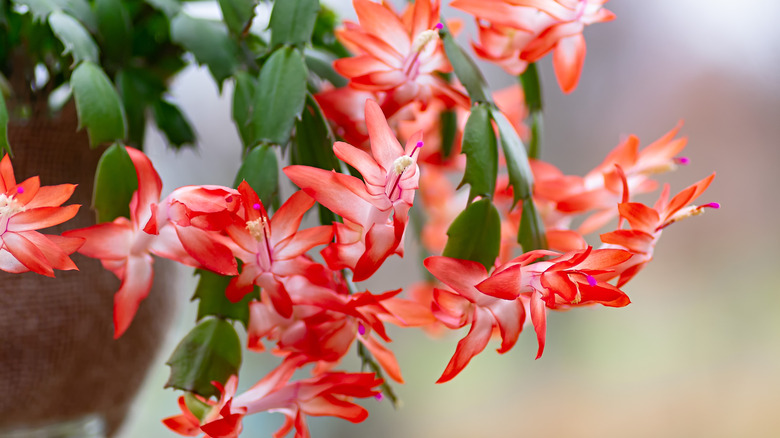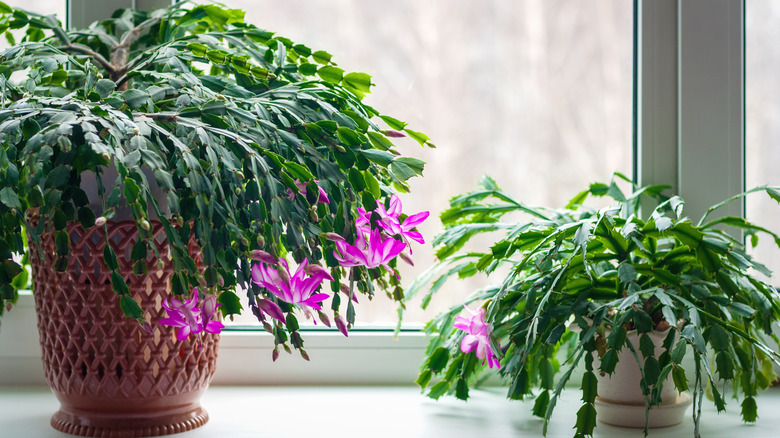Helpful Tips For A Growing A Thriving Thanksgiving Cactus
Thanksgiving cactus (Schlumbergera truncata) goes by several different names including claw cactus and crab cactus. That's because it has spiky-looking points on its foliage that resemble claws. These succulents bloom in November and can continue beyond Christmas. That can be a little confusing because there's another species actually called Christmas cactus (Schlumbergera x buckleyi) that can bloom around the same timeframe. The main difference between a Thanksgiving cactus and a Christmas cactus lies in the leaf-like stems called cladodes. The cladodes on a Christmas cactus are smooth on the edges rather than spiked. The deadly mistakes to avoid making with both these plants are similar, however, since they're from the same family.
While they are technically cacti, these plants don't have the dry, hot growing requirements you might expect since they hail from South American rainforests. The ideal temperature for growing a Thanksgiving cactus is in the 70 to 80 degree Fahrenheit range, making it an excellent choice as a houseplant. They like soil that drains well, so potting them in succulent or cactus mix is perfect. Keep the potting medium moist but don't overwater. They also like humidity, so if you have a spot where they'll get bright light in a bathroom, they can be right at home there. Beyond these basic care requirements, there are a few other things you can do to make sure your Thanksgiving cactus does its best blooming.
Other keys for growing healthy Thanksgiving cactus
One reason Thanksgiving cactus is a popular houseplant is the promise of red, purple, orange, pink, or white blooms each winter. They need light to bloom but won't even start thinking about budding out until the days get shorter in the fall; they need fewer than 12 hours of light exposure each day for six weeks to put on blooms. If enough time has passed and you're still not seeing buds, you can force blooms by exposing your Thanksgiving cactus to several nights of temperatures around 40 degrees Fahrenheit, according to NC Cooperative Extension. Place your plant in a brightly lit spot indoors afterward.
It's best to fertilize Thanksgiving cactus in the spring when they're growing and about once a month thereafter until the fall. During the summer months, you can put them outside, but keep them in a shady area to keep the leaves from yellowing. You might also notice a few pests like spider mites and mealybugs. The simplest way to banish mealybugs and scale from these plants is with rubbing alcohol applied to a cotton swab. And even though these plants do like moist soil, they will develop root rot if you water them too much. They also enjoy humidity, but if the air doesn't circulate well where they're growing, gray mold can crop up. Once you find the right spot for them, however, they can be showy bloomers that will amaze you for several weeks each winter.

